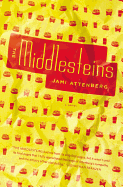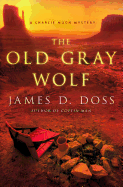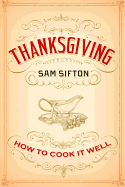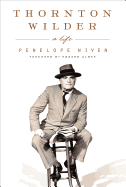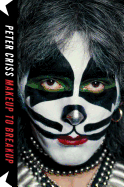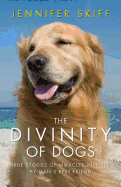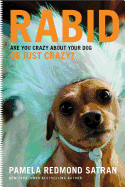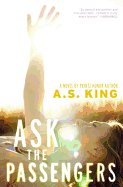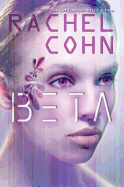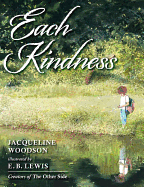 Andrea Davis Pinkney is a versatile author whose work ranges from the novel Bird in a Box, a Today Show Al Roker Book Club Pick, to her picture books with her husband, Brian Pinkney: Sit-In: How Four Friends Stood Up by Sitting Down, which was named a 2011 Flora Stieglitz Straus Award winner and a Jane Addams Honor book; and Duke Ellington: The Piano Prince and His Orchestra, which received a Caldecott Honor. She and Brian Pinkney live with their family in Brooklyn, N.Y.
Andrea Davis Pinkney is a versatile author whose work ranges from the novel Bird in a Box, a Today Show Al Roker Book Club Pick, to her picture books with her husband, Brian Pinkney: Sit-In: How Four Friends Stood Up by Sitting Down, which was named a 2011 Flora Stieglitz Straus Award winner and a Jane Addams Honor book; and Duke Ellington: The Piano Prince and His Orchestra, which received a Caldecott Honor. She and Brian Pinkney live with their family in Brooklyn, N.Y.
Your narrative voice for Hand in Hand brims with information, yet also has a storyteller's cadence. How did you find the voice for this collection of biographies?
In many respects, I feel that the narrative voice found me. I knew I wanted to include all these men, and I wanted to portray these trailblazers in this very different way. Once I decided to do that, one by one these guys started to tell me their stories. I almost felt like I was in the center orchestra at the theater, and each man stood out and told me his life. My role was as a storyteller who was listening carefully.
Each of the opening poems [for the chapters] are like praise songs. Keeping in mind this idea that if I'm a middle school reader, my takeaway about Frederick Douglass or W.E.B. DuBois would be that praise song. I wanted to give them that nugget of each individual.
What made you decide to focus solely on men?
The reason is there's still so much bad press about the stereotyping of African American males--I talk about this in my introduction. I've become acutely aware of the negative impact that has on boys. I'm the mother of a black son, and as I mention in the introduction, I visited a literacy institute specifically for African American boys in Chicago, and saw the impact that negativity and positivity can have. I wanted to illuminate the individual stories and give all readers, not just boys, stories that illuminated the positivity of black manhood. My own child, who's a middle-schooler, was begging me for narrative nonfiction that's fun to read. All these factors came together.
How did you choose whom to include and whom to leave out?
In the preliminary stages, that was the most daunting aspect of pulling the book together. You could debate all day: Who are the 10 black men who changed America? The idea is that their individual accomplishments would link up, hand in hand, to tell one story. For me, it was important to span America's history from the Colonial period to the Civil War to the turn of the century, the Civil Rights movement and modern day. I also spoke to African American men about who should be in here and why. Finally, certain names kept emerging.
How do you conduct your research? Do you have in mind where you want each biography to go, or do you let the research guide you?
I definitely let the research guide me. I'm a journalist; that's my first discipline. I start with doing a lot of reading. I'm a firm believer in primary source materials, and if I can see a shoe, a pair of glasses, letters--those things will animate the story and breathe life into these historical figures. For many young readers, these are wooden, cardboard, inaccessible people. I wanted to make them living, breathing, vibrant gentlemen.
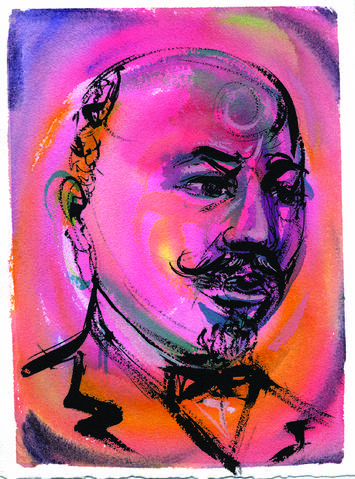 Years ago, I had gone to W.E.B. DuBois's grave and living space in Ghana, in West Africa. I remember at the time feeling that this man and his mission have inhabited me for the time that I've been here. And then, Brian and I were driving in Great Barrington, Mass., and we said, "Look, there's W.E.B.'s boyhood home." I experienced again that same quivering feeling. Each of them inhabited me in the process of writing each of their individual stories, and basically gave me the narrative. Then you go back, you edit, you make the transitions and all that. But each one came like a bolt.
Years ago, I had gone to W.E.B. DuBois's grave and living space in Ghana, in West Africa. I remember at the time feeling that this man and his mission have inhabited me for the time that I've been here. And then, Brian and I were driving in Great Barrington, Mass., and we said, "Look, there's W.E.B.'s boyhood home." I experienced again that same quivering feeling. Each of them inhabited me in the process of writing each of their individual stories, and basically gave me the narrative. Then you go back, you edit, you make the transitions and all that. But each one came like a bolt.
Did you guide Brian Pinkney's choices at all? Did you select photos as you did your research, and emphasize certain ones for the portraits?
The book started with the portraits. Brian started painting some portraits as a gift for our son, who's a teenager. Brian wanted to do them in these very bold India inks, and bold colors and dyes to really reflect the beauty and the boldness of each of these men and also of our son coming of age--bold and beautiful. And when he was into a few of these, I said to Brian, "Those are really striking." He did them with such abandon; he wasn't thinking these are going to be in a book. That's the strength of the portraits. [In a reversal of the usual process,] some of them inspired me. In a normal world, I wouldn't share cereal or the same tube of toothpaste with the illustrator of my work.
The fact that you included men who disagreed in their ideas and/or the implementation of those ideas makes for great fodder for discussion.
Disagreements are a good thing. It means people have strong convictions. It was a deliberate choice to include men with opposing views. It allowed me to explore the cultural, political and social landscapes of their time. Martin Luther King Jr. was not the defining point of view. There was Malcolm X. There was W.E.B. Dubois and Booker T. Washington, and each had his idea of how things should proceed.
I want [young people to have that exposure,] to know, "I can develop an idea and stick with what I believe is right." Along with that, I was also trying to convey that in many cases these men got to the point of, "Let's agree to disagree." Of all the men, Malcolm X's personal story is my favorite. He is one of the men in the book who made the greatest journey. He had this psychic change. He had these ideas mired in his past, and he did a complete turnaround and transcended all that. He was able to say, "We are all together in this."
The thread that connects them all is reading, whether they embraced it from the beginning, like Booker T. Washington, or came to it reluctantly, as Malcolm X did.
Here's the thing. If a book is a destination, a land, a place you can go, and I'm one of the men growing up in these circumstances, that's one of the few places where there's no segregation. I'm free. I can enjoy it, I can walk around, I can discover new things. I'm not mired or shackled down or worried about any of those forces that I have in my regular life. That was the pull for them. Reading allowed them that freedom, discovery, creative thought, inspiration, without any other societal forces. Libraries were segregated and all that, but once you get into the book, you're free. --Jennifer M. Brown
Andrea Davis Pinkney: Making History Happen





 Andrea Davis Pinkney is a versatile author whose work ranges from the novel Bird in a Box, a Today Show Al Roker Book Club Pick, to her picture books with her husband, Brian Pinkney: Sit-In: How Four Friends Stood Up by Sitting Down, which was named a 2011 Flora Stieglitz Straus Award winner and a Jane Addams Honor book; and Duke Ellington: The Piano Prince and His Orchestra, which received a Caldecott Honor. She and Brian Pinkney live with their family in Brooklyn, N.Y.
Andrea Davis Pinkney is a versatile author whose work ranges from the novel Bird in a Box, a Today Show Al Roker Book Club Pick, to her picture books with her husband, Brian Pinkney: Sit-In: How Four Friends Stood Up by Sitting Down, which was named a 2011 Flora Stieglitz Straus Award winner and a Jane Addams Honor book; and Duke Ellington: The Piano Prince and His Orchestra, which received a Caldecott Honor. She and Brian Pinkney live with their family in Brooklyn, N.Y. Years ago, I had gone to W.E.B. DuBois's grave and living space in Ghana, in West Africa. I remember at the time feeling that this man and his mission have inhabited me for the time that I've been here. And then, Brian and I were driving in Great Barrington, Mass., and we said, "Look, there's W.E.B.'s boyhood home." I experienced again that same quivering feeling. Each of them inhabited me in the process of writing each of their individual stories, and basically gave me the narrative. Then you go back, you edit, you make the transitions and all that. But each one came like a bolt.
Years ago, I had gone to W.E.B. DuBois's grave and living space in Ghana, in West Africa. I remember at the time feeling that this man and his mission have inhabited me for the time that I've been here. And then, Brian and I were driving in Great Barrington, Mass., and we said, "Look, there's W.E.B.'s boyhood home." I experienced again that same quivering feeling. Each of them inhabited me in the process of writing each of their individual stories, and basically gave me the narrative. Then you go back, you edit, you make the transitions and all that. But each one came like a bolt.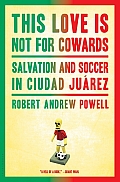 Juárez is the most murderous city in the world, a strategically placed entry point into the United States (across the Rio Grande from El Paso, Tex.), plagued by warring drug cartels and corrupt police and officials. Some 10 people are murdered daily in restaurants, in convenience stores, on the street. In This Love Is Not for Cowards: Salvation and Soccer in Ciudad Juárez (Bloomsbury USA), American journalist Robert Andrew Powell follows the Indios of Ciudad Juárez futbol club during their lackluster 2009 season as they fall from the Mexican premier league to relegation. The team's supporters, El Kartel, follow them loyally and with passion. The Indios provide hope and a thin possibility of redemption for the citizens of Juárez. In this very dangerous and frightening city, there's the belief that people can be bigger than the violence and brutality, and can be bound together by a sport.
Juárez is the most murderous city in the world, a strategically placed entry point into the United States (across the Rio Grande from El Paso, Tex.), plagued by warring drug cartels and corrupt police and officials. Some 10 people are murdered daily in restaurants, in convenience stores, on the street. In This Love Is Not for Cowards: Salvation and Soccer in Ciudad Juárez (Bloomsbury USA), American journalist Robert Andrew Powell follows the Indios of Ciudad Juárez futbol club during their lackluster 2009 season as they fall from the Mexican premier league to relegation. The team's supporters, El Kartel, follow them loyally and with passion. The Indios provide hope and a thin possibility of redemption for the citizens of Juárez. In this very dangerous and frightening city, there's the belief that people can be bigger than the violence and brutality, and can be bound together by a sport. 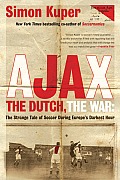 During their occupation of the Netherlands in World War II, the Nazis insisted that the country's soccer clubs expel their Jewish players. In Ajax, the Dutch, the War (Nation Books), Simon Kuper writes that the Dutch, often touted as heroes of the resistance, were perhaps too easily persuaded to accede to the Nazis' directive. Some Jewish players ended up in death camps. Some Ajax club members hid Jews during the war, while others were not nearly as altruistic. Some Dutch resisted, some collaborated. It was very gray in the land of orange.
During their occupation of the Netherlands in World War II, the Nazis insisted that the country's soccer clubs expel their Jewish players. In Ajax, the Dutch, the War (Nation Books), Simon Kuper writes that the Dutch, often touted as heroes of the resistance, were perhaps too easily persuaded to accede to the Nazis' directive. Some Jewish players ended up in death camps. Some Ajax club members hid Jews during the war, while others were not nearly as altruistic. Some Dutch resisted, some collaborated. It was very gray in the land of orange. Saying that La Roja, the Spanish national team, is currently the best soccer team in the world is just stating fact. How they got there, from a handful of ex-pat Brits teaching the game to a community of Basques, is the stuff of
Saying that La Roja, the Spanish national team, is currently the best soccer team in the world is just stating fact. How they got there, from a handful of ex-pat Brits teaching the game to a community of Basques, is the stuff of 